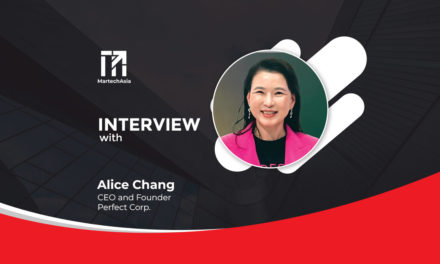Learn how human-centered software development can help enhance the user experience and boost marketing efforts from Sara Faatz, Director of the Developer Relations team at Progress, in this MartechAsia interview.
User experience (UX) is a vital aspect to the success of every business’s digital marketing campaign. Excellent user experience promotes ease with which consumers can access, find, review, or avail of products and services. APAC businesses can attract and convert user experience into revenue while sustaining competitiveness and survival.

The business world is in rapid digital acceleration, in which companies use the internet of Things (IoT), applications, and software systems to automate operations, strengthen cybersecurity, and improve customer service. Therefore, enhancing user experience involves embracing human-centered software development.
Find out how human-centered software development can help enhance the user experience and boost your brand’s marketing efforts from Sara Faatz, Director of the Developer Relations team at Progress, in this MartechAsia interview.
How do you define human-centered software development?
Human-centered software development includes the perfect blend of art, science, and empathy to applications with attractive design, rich functionality, and easiness of use. While before the pandemic, technology complemented in-person communication.
Today, it is expected to be totally replaced, recreating the same level of personal experience. To do that, developers should consider the user needs, behaviours, and how people will use a specific application to empower them to interact with it on their own terms and be able to conduct their activities easily and efficiently, be it retail, communications, or analysis.
This consideration will be even more important as digital interactions have become the new normal, with over 96 percent of Asia Pacific users accessing mobile Internet, according to a UN ESCAP report.
Why is human-centered software development important?
I’ll give you a simple example. Human-centered software is inclusive and accessible to all.
Most people are likely to experience some form of disability—either temporarily or permanently—at some point in their life. Plus, we all use accessibility features at times—even if we don’t think of them that way. If you’ve ever used your mobile device’s operating system in dark mode, zoomed or adjusted the text size in a Web browser, or dictated text into Siri, you’ve benefited from your device’s accessibility features.
Designing accessible apps means designing them so all users can navigate their user interface comfortably and easily. It’s interesting that, very often, accessibility can make applications suitable for new audiences, leading to increased app usage and revenue.
What are the contemporary issues and challenges in human-centered software development?
One of the key challenges is the lack of collaboration among all teams involved in software development. Human centricity isn’t a job only for developers. It’s something all involved in the process – product teams, UX teams, etc. – should be thinking of.
Another challenge is the ever-changing needs of users. Empathy is critical in software development as developers need to understand how their software can solve users’ problems.
To understand the users’ needs and expectations, developers need to think like them. It means working closely with users to find out their problems and why they want to solve them. This step will help in refining the core requirements that the product must fulfill upon release to market.
What appropriate software development approaches and technologies meet user needs and requirements?
To make sure developers are putting the human experience at the center of their application, they need to ask themselves several questions like the following:
- How will end users use the application?
- Can people with disabilities use it?
- Have the target audience of the app changed due to external factors
- Does the app replace face-to-face communication?
- Are there opportunities for increasing user engagement?
Sometimes the easiest way to understand that is just to ask your potential audience through surveys or focus groups. You can use heatmaps or other similar tools to understand user behaviour and interaction with an app.
What are the essential skills in dealing with uncertainty and complexity in software development?
Understanding the business part of the app, putting the end-user experience first, quickly adjusting on the go, and collaborating with others are among the most important skills for developers when working with complex software apps. The role of developers expands beyond writing code, and they are expected to better understand the business behind the technology, make decisions and drive innovation.
What is the role of Progress in creating a human-centered approach to software development?
With our comprehensive libraries of UI components, Progress Telerik and Progress Kendo UI, we enable developers to build compelling, highly performant, and intuitive apps for less time and with less effort across .NET and JavaScript.
Instead of creating their app user interface from scratch, they can use our professionally designed, customizable, and accessible components and invest their time in the app’s business logic. With our latest product release in September this year, we introduced a new tool – ThemeBuilder Pro, that helps developers and designers implement design systems seamlessly in web applications and achieve better design consistency without manual coding.
Implementing application design or a full-blown design system in app development requires significant coding work and is often accompanied by mistakes and misalignment between designers and developers. And once it is implemented, making changes across components requires significant time spent on re-coding. We remove this complexity and increase the focus on people-centric design in apps.
In this MartechAsia interview, you’ve learned the important role that human-centered software development plays in user experience and marketing. More than the excellent products and services, APAC companies must ensure that users can seamlessly access and engage with their sales and marketing tech platforms, such as eCommerce websites and shopping apps.
Human-centered software development involves designing and developing interactive systems focused on users. Developing useful and usable systems applies various human factors or ergonomics, including usability knowledge and methodologies. As such, users experience seamless use of applications and software systems, drawing them closer to the B2C or B2B brand. To attain these goals, Progress provides the right tools APAC companies need to enhance user experience through human-centered software development.


















